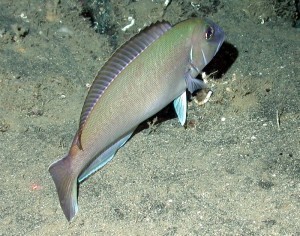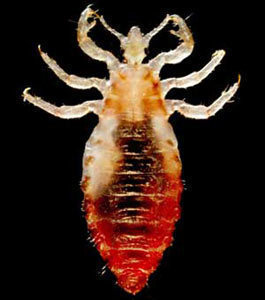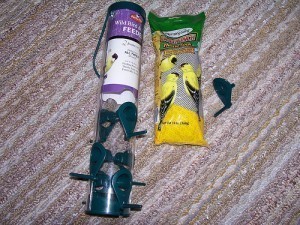Size of a Tilefish
The size of the tilefish (or blanquillo) varies depending on the species.  The yellow tilefish (Hoplolatilus luteus) is 11 cm long, while the great northern tilefish (Lopholatilus chamaeleonticeps) is 125 cm long (50 inches) and can weigh 30 kg.
The yellow tilefish (Hoplolatilus luteus) is 11 cm long, while the great northern tilefish (Lopholatilus chamaeleonticeps) is 125 cm long (50 inches) and can weigh 30 kg.
Classification
The tilefish make up the Malacanthidae family in the Perciformes order of the Actinopterygii class. There are two subfamilies: the Malacanthinae and the Branchiosteginae.
Physical Characteristics
The Branchiosteginae tilefish have large heads with deep set bodies. The mouths are also quite large. The Malacanthinae on the other hand, have narrow bodies. Their mouths and heads are also smaller.
The size of the tilefish also varies within the families. However, all of them have anal and dorsal fins. The anal fins have a couple of spines. Some of the species have a sharp operculum (cover for the gill) but in others it is blunt.
There are also some tilefish with a cutaneous ridge over the head. The tails fins may be forked in some species. In others, it is shortened. The fish comes in many colors, the most common being gray, brown and yellow. However, the Hoplolatilus species comes in
various vivid colors.
The larvae are remarkable for the serrations and spines all around the scales and the head. It is this feature that gave it the name Malacanthidae (from the Greek words mala “many” and akantha “thorn”).
Habitation
The fish are usually situated 50 – 200 meters around the tropical waters in the Indian, Pacific and Atlantic Oceans. This is true regardless of the size of the tilefish involved. The fish make their homes in reef bases, caves or over rocks.
They can also be found near sloped edges and around the canyons. Some species prefer gravelly substrate, but others opt for sandy types. If necessary, the fish will make their own dwelling places.
All tilefish are marine based creatures. The exception is the blue blanquillo (Malacanthus latovittatus) which goes into brackish waters at the Goldie River at Papua New Guinea.
Diet
Their food consists of crustaceans like shrimps and crabs. They also feed on benthic invertebrates. The tilefish also feeds on the sea urchins, worms, mollusks and other smaller fish. All the species have well developed eyesight, helping them go after their prey.
Behavior
The tilefish do not mix with other fish and stay among their own kind. If another fish goes near it, the tilefish will quickly go into their dwelling place. The chameleon sand tilefish (Hoplolatilus chlupatyi) has a unique ability to ward off opponents: it can change colors.
Some species like ocean whitefish are solitary. The pastel fish on the other hand, spends most of its time constructing mounds where they reside. Their home also functions as a self contained ecosystem for other reef based organisms.
While the size of the tilefish is well established, its reproductive behavior is not well known. What is clear is that spawning takes place during spring and summer. The eggs measure less than 2 mm. it has oil properties to keep it buoyant.





